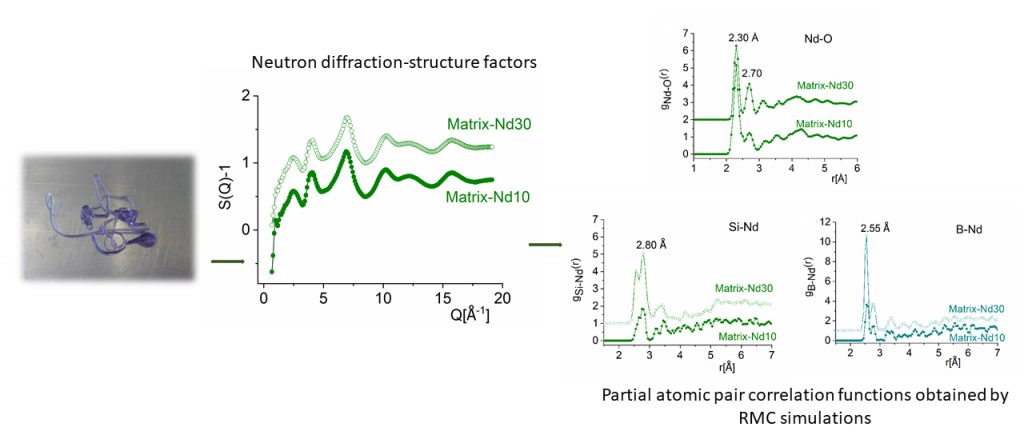Structural investigation on borosilicate glasses for long-term immobilisation of high-level radioactive wastes
|In 2020 there are 109 active nuclear power plants in the territory of the European Union. The spent nuclear fuel produced by each one of these plants needs to be treated in a process called reprocessing. High-level radioactive waste materials are made during this process, containing uranium, plutonium, and minor concentrations of other elements of the group of the actinides, such as thorium, neptunium, americium, and curium. Uranium and plutonium can be converted into a mixed oxide material which is still a usable nuclear fuel, but other long-lived actinide elements need further treatment for long-term storage in an inert host material. In this regard, borosilicate glasses are a prime candidate due to their mechanical and chemical durability for high-level radioactive waste immobilisation.
A study published in Nature Scientific Reports led by Dr. Margit Fabian (Centre for Energy Research) focuses on the structural investigation of borosilicate glasses to incorporate lanthanides ions as a non-radioactive surrogate for the actinides. The substitution of ions from the actinides to the lanthanide group of the periodic table was necessary to manipulate the samples in standard laboratory environments. This work stemmed from a collaboration between the Centre for Energy Research in Budapest, the National Institute of Chemistry in Ljubljana, and the Bhabha Atomic Research Centre in Mumbai.

Different experimental techniques were employed to determine the structure of lanthanide borosilicate glasses, together with computational simulations. The experiments also involved CERIC techniques such as neutron diffraction, performed at the Hungarian CERIC Partner Facility at the Budapest Neutron Centre and Magic Angle Spinning (MAS) NMR spectroscopy at the Slovenian CERIC Partner Facility at the SloNMR Centre in Ljubljana. This study allowed to conclude that borosilicate glass matrices have a great potential for high-level radioactive waste management due to their capacity to incorporate large concentrations of actinides, thus tackling one of the main issues connected to the use of nuclear energy.



